Asplenium platyneuron
Asplenium platyneuron ebony spleenwort
One of the most common and conspicuous of the Asplenium ferns, A. platyneuron is easy to identify by its tall (up to 18 in) dark green fertile fronds and a dark reddish brown stem (stipe and rachis). In the summer, the vase-shaped clusters stand out in the undergrowth of woods or on open rocky slopes. This fern is dimorphic, with fertile fronds being significantly taller and more erect in appearance. In some plants, buds on the stipe may proliferate and produce a cluster of new fronds.
Because of the presence of a single lobe (called 'ear') on each pinna of fertile fronds, this fern is sometimes confused with the Christmas fern (Polystichum acrostichoides); however in P. acrostichoides fronds are much wider, of darker green and the green stipe bears numerous scales.
The epithet 'ebony' in 'ebony spleenwort' refers to the dark color of the stipe and rachis. It is not quite accurate, as the color, although dark brown, is not ebony black. Black-stemmed spleenwort (A. resiliens) has an actual ebony-colored stem.
Habitat & Range
Shaded woods, fields, talus slopes, bases of rocks, river banks, and also fences or walls. Thrives in any kind of well-drained, rocky soil or deposits of humus. Most adaptable of all Asplenium species, although is still sensitive to excess of water.
Present throughout, scarce in the most northern part of the state.
| EMP: | FACU |
|---|---|
| NCNE: | FACU |
Phenology
When the fertile fronds mature in mid-spring, their pinnae will form two columns of elongated, diagonally positioned sori on the undersides. Indusia (protective covers over sori) wither away as the fern matures. Spores are released and dispersed by wind in mid-summer to early fall.
Sterile fronds overwinter green, while fertile may live only through the warm season (semi-evergreen).
Characteristics
Fertile fronds 12-20 in long, dark green, and semi-evergreen. Erect, narrow, tapering to top and bottom.
Sterile fronds shorter than fertile, more spreading, sometimes lay flat on the ground, more numerous, of lighter green color and overwinter.
Both sterile and fertile fronds have 18 or more pairs of pinnae.
Fertile pinnae arrow-oblong, pointed, eared at the base, alternate, and distinctly spaced.
Sterile pinnae more rounded, closer together, very slightly eared with less toothy edges than fertile pinnae.
Veins free and forked.
Rachis dark reddish brown, smooth, and shining throughout.
Stipe dark reddish brown, smooth; short, stiff, brittle, and erect in fertile fronds and even shorter, pendent/spreading in sterile fronds.
Rhizome thick, usually vertical, with few scales.
Sori numerous (up to 12 pairs per pinna), linear, short and straight often massed together. Indusium silvery when young, soon withering.
Identification Tips
Sterile fronds of this fern overwinter and are more spreading than the fertile ones; fertile fronds are tall, erect, and do not overwinter.
The dark brown stem of this fern stands out and tends to darken with age.
Plant Codes
S-rank: S5 (Secure)
G-rank: G5 (Secure)
APG/Taxonomization Info
This fern was originally described by Linneus in 1753.
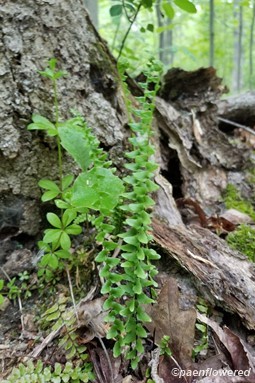

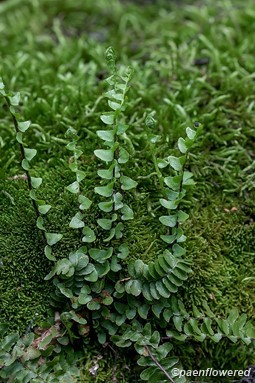

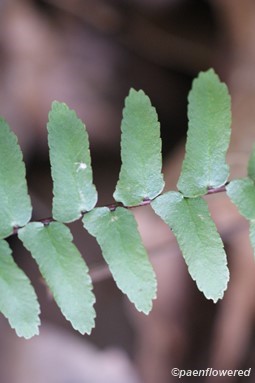

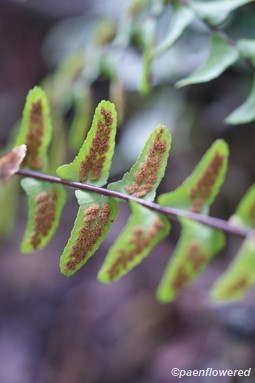
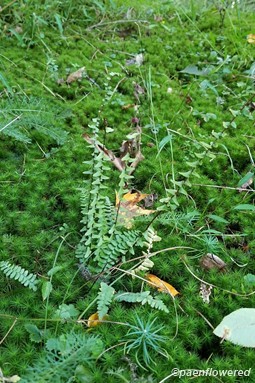
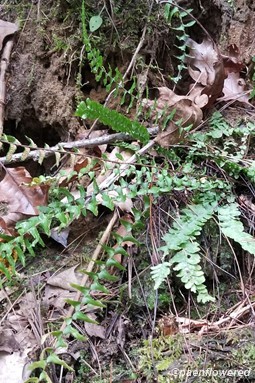

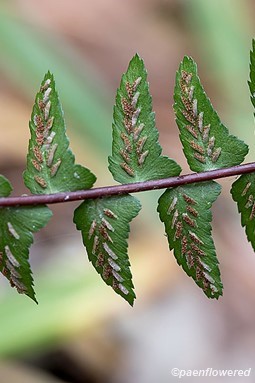
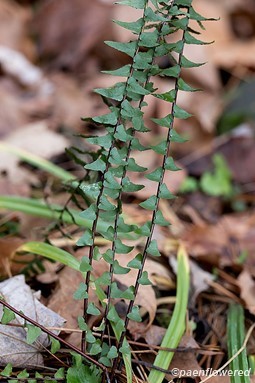
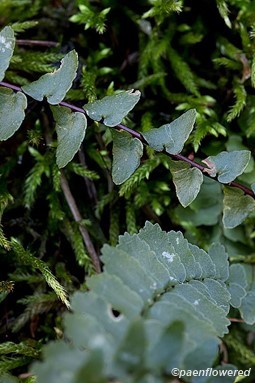




Comments
Have you spotted this plant in your area? We'd love to hear about your experience! Share your comments or questions about the plant below. Comments are moderated before posting.